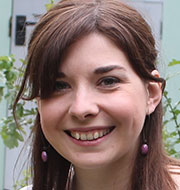 In a week when the first successful organ donation from a newborn was carried out in the UK, The BMJ seems to also be learning new lessons from the youngest in our society.
In a week when the first successful organ donation from a newborn was carried out in the UK, The BMJ seems to also be learning new lessons from the youngest in our society.
The latest State Of The Art (SOTA) review by Eugene Chang discusses the increase in preterm birth rates worldwide (11.1% of all deliveries in 2010), the consequences of early delivery, and the role of neuroprotection. Chang looks at the current evidence for management, including the use of maternal steroids for those at high risk of preterm delivery, and the controversies around the safety of magnesium sulfate. The related infographic succinctly illustrates the neurodevelopmental consequences of preterm delivery.
Ioannidis and colleagues suggest from their survey of systematic reviews that those conducting research within a certain population should reach agreement on core outcomes to record, regardless of the topic studied. Using chronic lung disease (CLD) outcomes in the trials of preterm infants as an example, they quantify how often the important outcome is missing in studies concerning this population (more than two thirds of the time). Remarkably, this is even the case in trials looking specifically at ventilation interventions, with CLD outcomes reported in just over half of these studies (56%). The authors argue that selective reporting threats the validity of results from RCTs and systematic reviews and call for standardised clinical outcomes to be considered. In the linked editorial Walter Koroshetz discusses the benefits and drawbacks to this proposal and the future of “big data.”
Moving up the ages, there is an Endgames quiz on an adolescent with an altered state of mind, where you can test your diagnostic skills in this often challenging and overlooked age group.
And not neglecting those of more advanced years, the latest analysis looks at the recommendations for physical activity in older adults. The authors suggest that there may be merit in changing the emphasis for older adults (>65 years) from the currently recommended 150 minutes of vigorous activity each week, to instead improving their general daily inactivity. As the hours spent sedentary rise with increasing age, Sparling and colleagues suggest discussions should centre on how to introduce light activity to daily routine, such as pacing when on the phone and walking rather than driving short journeys. These smaller more manageable changes may lead to bigger changes in the older persons’ approach to exercise.
Finally, The BMJ does not shy away from discussion about the end of life. Kelly Brendel and David Payne reflect on the media response to Richard Smith’s BMJ blog regarding death. The initial blog created anger and divide in those affected by the conditions mentioned, and this medicine and the media feature takes a calm overview of the points raised by the public, medical professionals, and the media.
Emma Parish is editorial registrar, The BMJ. You can follow her on Twitter at @ejparish
